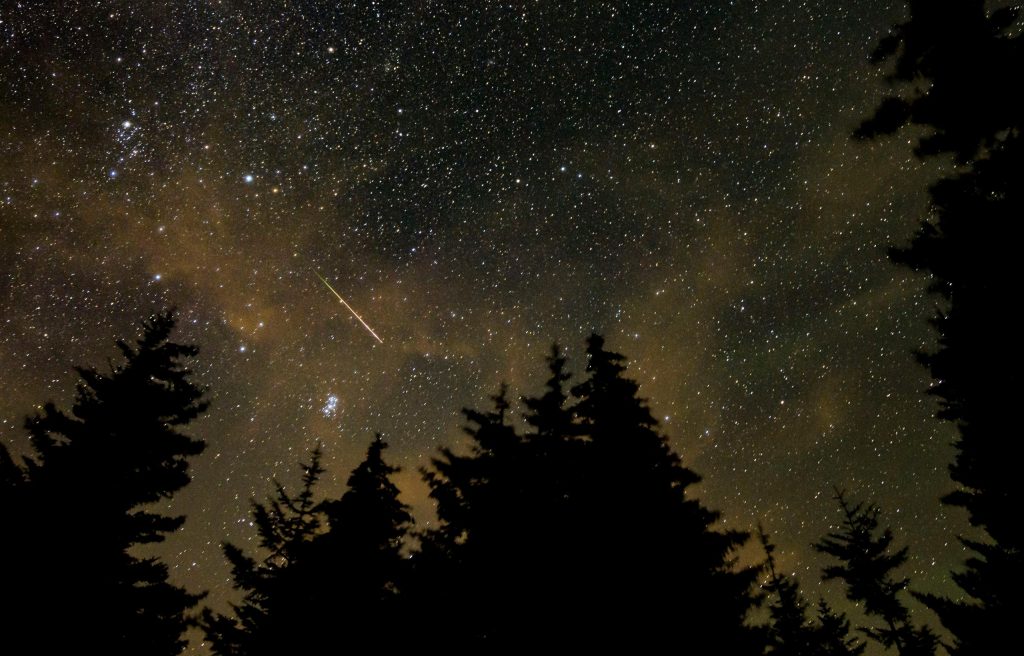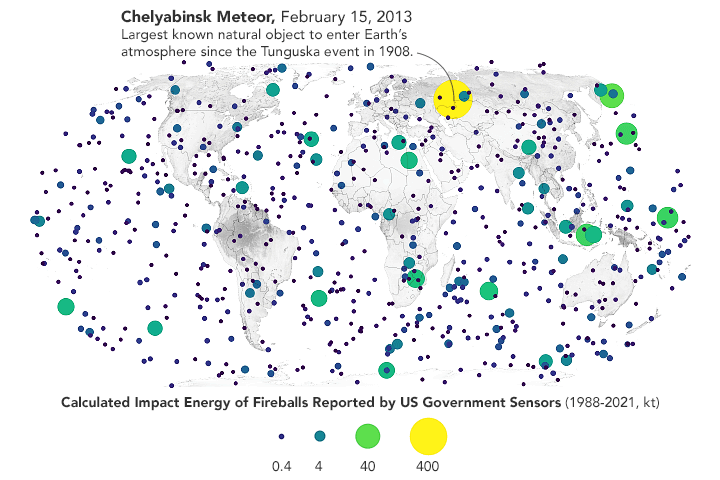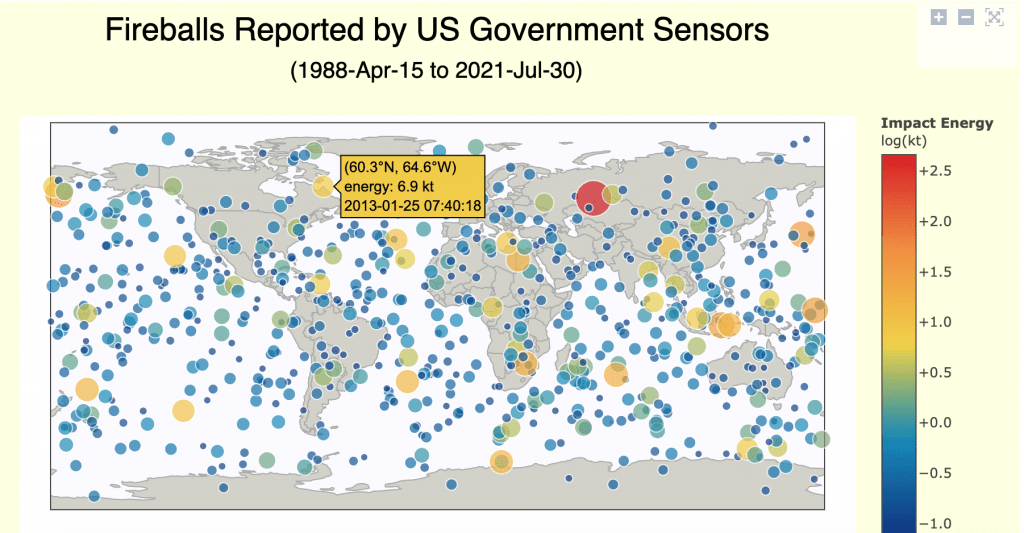During the peak of the Perseids meteor shower last month, numerous streaks of light raced across the night sky. Every year in mid- to late-August, Earth’s orbit intersects with the debris trail left by Comet Swift-Tuttle, resulting in a spectacular light show.
While the Perseids and other major showers (Geminids, Orionids, and Leonids) are the most visible, meteors can be seen at any time of year, albeit at a slower rate. This is due to the fact that the Earth is constantly bombarded with massive amounts of dust and sand-sized particles. Sometimes, an object is large enough to produce a brilliantly bright spectacle known as a fireball.
“More people see meteors during a shower because there are so many of them. For the Perseids, there are up to 100 meteors per hour,” said Paul Chodas, director of the Center for Near Earth Object Studies (CNEOS) at NASA’s Jet Propulsion Laboratory. “Fireball events, on the other hand, are quite rare and can happen on any day of the year.”
The map above was created using data compiled by CNEOS scientists and based on an interactive version created by Alan Chamberlin. Between 1988 and 2021, the map displays the locations of large fireballs detected by government sensors. The size of each dot is proportional to the impact energy (kinetic energy) of each fireball, which is the total energy brought into the atmosphere by the meteoroid due to its velocity.
As a meteoroid enters Earth’s atmosphere, some of its kinetic energy is converted into radiated energy, which is detected by the sensors as a bright optical flash. The remaining energy is converted into sound waves and other wavelengths of energy. Some of it becomes a blast shock wave. Scientists developed a method for determining the total energy of an event based on its optical flash after observing many such events. Scientists can calculate the original size of the object before it entered the Earth’s atmosphere based on this information.
Using such calculations, scientists estimated that the asteroid that lit up the sky over Chelyabinsk, Russia, in February 2013 was initially 20 meters across. This is by far the largest fireball recorded in the CNEOS database, which focuses on larger fireballs. All of the fireballs in the database are caused by asteroids that are at least one meter in diameter.
The meteoroids associated with a meteor shower, on the other hand, are much smaller, ranging in size from a grain of sand to tens of centimeters. Fireballs associated with meteor showers are possible but infrequent. Even so, some Perseids can be quite bright.

Meteors do not have to be fireballs to be photogenic. On August 11, 2021, during the peak of the Perseid meteor shower, NASA photographer Bill Ingalls captured this image of a meteor zipping across the night sky. The 30-second exposure was captured by Ingalls from the summit of Spruce Mountain in West Virginia. A few thin clouds lingered, reflecting light from nearby cities.
Take note that a part of the meteor appears green. This is due to the way the meteoroid excited oxygen molecules during its impact with the atmosphere, according to Bill Cooke, lead at the NASA Meteoroid Environment Office.
Cooke also mentioned that the Perseid meteor shower is particularly rich in bright meteors. He points data from NASA’s all-sky meteor camera network, which can detect meteors brighter than Jupiter. “The number of bright meteors in the Perseids dwarfs all other meteor showers—30 percent more than the Geminid shower, which has better rates and is also noted for bright meteors,” Cooke said.
The shower was at its peak from August 11 to 13, and it’s too late to catch a glimpse of the summer phenomenon. For a few days after the peak, meteors should be relatively abundant in the night sky. Beyond that, keep looking up; you never know when a rare fireball might brighten the night or even the day.
READ MORE: Is It Possible To Hear Meteors?








Thanks for blocking out the UK.
I witnessed a huge fireball over Devon in 2009 but was never reported anywhere